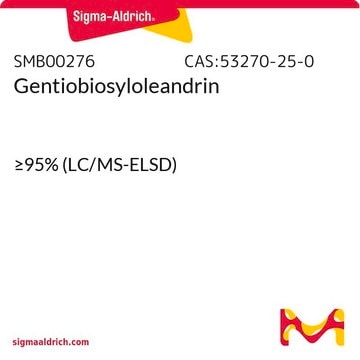J3705
JB1 trifluoroacetate salt
≥98% (HPLC)
Synonym(s):
H-Cys-Tyr-Ala-Ala-Pro-Leu-Lys-Pro-Ala-Lys-Ser-Cys-OH trifluoroacetate salt, JB-1 trifluoroacetate salt, L-Cysteinyl-L-tyrosyl-L-alanyl-L-alanyl-L-prolyl-L-leucyl-L-lysyl-L-prolyl-L-alanyl-L-lysyl-L-seryl-L-Cysteine, cyclic (1-12)-disulfide trifluoroacetate salt
About This Item
Recommended Products
Assay
≥98% (HPLC)
form
film
storage condition
desiccated
shipped in
wet ice
storage temp.
−20°C
SMILES string
CC(C)C[C@@H]1NC(=O)[C@@H]2CCCN2C(=O)[C@H](C)NC(=O)[C@H](C)NC(=O)[C@H](Cc3ccc(O)cc3)NC(=O)[C@@H](N)CSSC[C@H](NC(=O)[C@H](CO)NC(=O)[C@H](CCCCN)NC(=O)[C@H](C)NC(=O)[C@@H]4CCCN4C(=O)[C@H](CCCCN)NC1=O)C(O)=O
InChI
1S/C55H88N14O15S2/c1-29(2)24-38-49(77)63-37(13-7-9-21-57)54(82)69-23-11-14-42(69)51(79)60-31(4)45(73)62-36(12-6-8-20-56)47(75)66-40(26-70)50(78)67-41(55(83)84)28-86-85-27-35(58)46(74)64-39(25-33-16-18-34(71)19-17-33)48(76)59-30(3)44(72)61-32(5)53(81)68-22-10-15-43(68)52(80)65-38/h16-19,29-32,35-43,70-71H,6-15,20-28,56-58H2,1-5H3,(H,59,76)(H,60,79)(H,61,72)(H,62,73)(H,63,77)(H,64,74)(H,65,80)(H,66,75)(H,67,78)(H,83,84)/t30-,31-,32-,35-,36-,37-,38-,39-,40-,41-,42-,43-/m0/s1
InChI key
MPUVBZQBFGGAAS-XHGDPFBQSA-N
Biochem/physiol Actions
Features and Benefits
Storage Class Code
11 - Combustible Solids
WGK
nwg
Flash Point(F)
Not applicable
Flash Point(C)
Not applicable
Certificates of Analysis (COA)
Search for Certificates of Analysis (COA) by entering the products Lot/Batch Number. Lot and Batch Numbers can be found on a product’s label following the words ‘Lot’ or ‘Batch’.
Already Own This Product?
Find documentation for the products that you have recently purchased in the Document Library.
Articles
We offers many products related to InsR for your research needs.
Our team of scientists has experience in all areas of research including Life Science, Material Science, Chemical Synthesis, Chromatography, Analytical and many others.
Contact Technical Service




